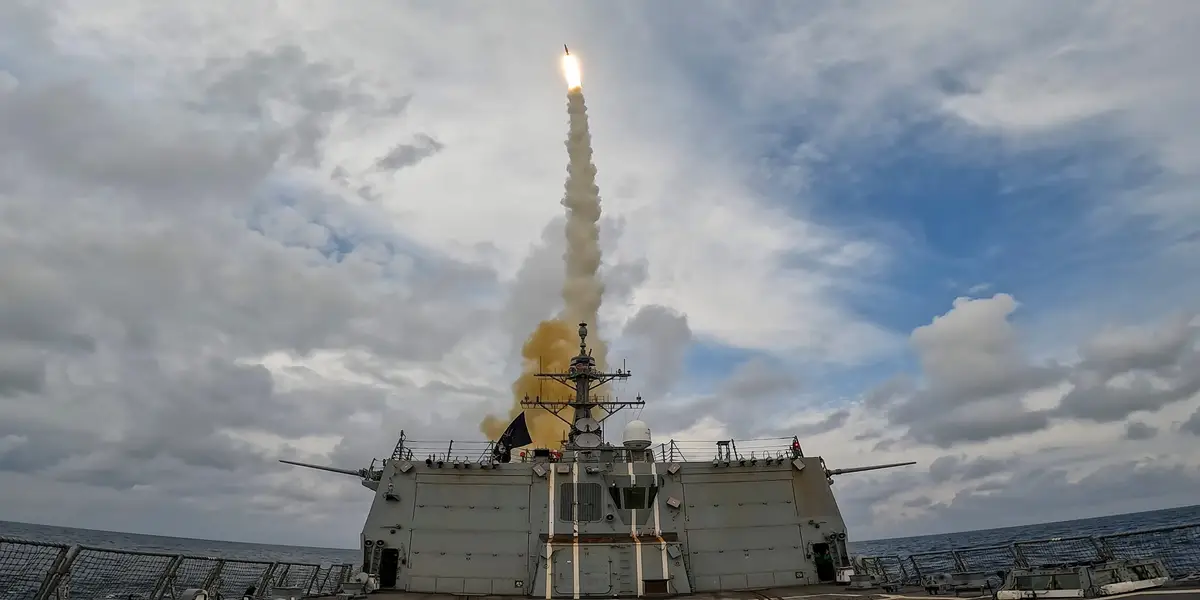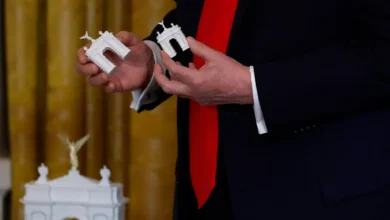US companies are making cheaper missiles for conflicts like the war with China

Warning signs are flashing, warning that a high-intensity war with China could quickly destroy America’s missile stockpiles, leaving them hamstrung in a long-running conflict.
War games have, for example, shown that in a fierce fight around Taiwan, U.S. forces could run out of long-range, precision-guided munitions in less than a week. Replacing those in the middle of the fight could strain both American industries and budgets. Trying to expand the arsenal before a war could have the same effect.
To solve this problem, some defense companies are turning to cheaper, easier-to-produce weapons, breaking with the Pentagon’s preference for expensive, high-end systems.
In a new Cogs of War podcast, Industry executives from defense companies Anduril, Mach Industries and Castilian spoke with War on the Rocks founder Ryan Evans about how their companies are working on cheaper missiles that can be quickly manufactured in larger quantities for much less money than some other munitions.
“Everyone has heard, across the services, about this problem of affordable mass,” said Steve Milano, senior director of advanced effects at Anduril, “and we have exquisite weapon systems, but we really need sufficient, affordable mass” for missiles and munitions.
Last year, Anduril unveiled the Barracuda family of cruise missiles with different increments depending on size, range and payload. On the podcast, Milano said Anduril will open its first Barracuda production plant in January 2026. “We’re going to pump 2,000 units per shift in this one facility,” he said.
Traditional missile supply chains, acquisition programs, and production lead times limit the number of missiles that can be manufactured at scale and affordability. United States Army Security Assistance Command
Anduril called the Barracuda “software-defined” and capable of being upgraded based on enemy countermeasures. The company also said the drone also addresses a key US vulnerability, namely the possibility that precision-guided munitions “could be exhausted within days during a high-level fight.”
When Anduril announced Barracuda, he said the U.S. industrial base and defense arsenal was struggling with limited production capacity and little flexibility for upgrades due to complex missile designs with custom parts and specialized equipment. supply chains.
Castelion CEO Sean Pitt said on the podcast that his company noticed the same problems and therefore looked for affordable solutions. hypersonic missiles. It has been fundraising and testing its Blackbeard missile for years, with plans to put it into service in 2027.
U.S. Army budget documents identified Blackbeard as a launch effect for high-mobility artillery rocket systems and suggested the missile could be useful as a means of hitting time-sensitive targets at a reduced cost per missile compared to other weapons in the service’s inventory.
And Mach Industries won a contract with the Army earlier this year for its Viper vertical takeoff strategic cruise missile, which costs less than $100,000 to manufacture on a large scale. CEO Ethan Thornton said on the podcast that the two big optimizations the company was pursuing were asymmetry, having low-cost ammunition with ranges that can be mass-produced, and survivability.
All three companies are effectively seeking to disrupt traditional U.S. missile costs and supply chains with the goal of not only making the systems cheaper in larger quantities, but also with less complex designs that could slow down production or upgrade cycles. But that doesn’t mean these companies necessarily always compete with major U.S. defense companies, which have decades of experience producing weapons and deep, established relationships with the DoD.
Recent conflicts have raised concerns about U.S. ammunition stockpiles and magazine depths. Courtesy photo of the Japanese Ground Self-Defense Force
There is certainly some antagonism in this area, perhaps exacerbated by pressure from some military leaders for reshuffles. “They see us as a threat in many ways, and we see them as a threat in a different way, in the sense that they can pollute your culture, they can slow you down a little bit,” Milano said of the big players.
But “bonuses are necessary,” he said, and other companies “are a compliment” to them, not a replacement.
In the podcast, industry leaders said the way the Pentagon traditionally purchased missiles was a lengthy process with numerous requirements that resulted in multi-year development cycles with significantly higher costs.
The approaches of Anduril, Mach Industries and Castelion are part of a broader shift by some U.S. defense companies toward a Silicon Valley-style disruptive model of rapidly moving on designs, breaking and fixing things, and upgrading them as necessary, something services like the military have also increasingly adopted with emerging technologies related to new software, artificial intelligence, autonomy and drone systems.
This now extends to missile development, as DoD and others increasingly recognize that having massive stockpiles of varied munitions that can be manufactured at scale at an affordable price is potentially more important to preparing for peer-level combat than a limited arsenal of sophisticated systems.
Recent conflicts in the Middle East have shown how quickly fighting can strain America’s missile arsenals. Shooting down Houthi missiles and protecting Israel from Iranian weapons came at a high cost in terms of spending on THAAD, SM-2, SM-3 and SM-6 interceptors. The war in Ukraine has drawn heavily on Patriot interceptor stockpiles, and Tomahawk cruise missile stockpiles are causing concern.
Last fall, Adm. Samuel Paparo, head of the U.S. Indo-Pacific Command, said conflicts around the world had eaten into the stockpiles of some air-to-air missileswhich were crucial to the region he oversees. “This imposes costs on America’s preparedness to respond in the Indo-Pacific region, which is the most stressful theater in terms of munitions quantity and quality, because (China) is the most powerful potential adversary in the world,” he said.
ـــــــــــــــــــــــــــــــــــــــــــــــــــــــــــــــــــــــــــــــــــــــــــــــــــــــــــــــــ
Soon, there will be articles covering various topics, such as:
Insurance, Loans, Mortgage, Attorney, Credit, Lawyer, Donate, Degree, Hosting, Claim, Conference Call, Trading, Software, Recovery, Transfer, Gas/Electicity, Classes, Rehab, Treatment, Cord Blood, Best mesothelioma lawyer, Truck accident lawyer, Buy life insurance online, Business VoIP provider, EMR software for clinics, Structured settlement companies, motorcycle injury lawyer, motorcycle injury attorney, spinal cord injury attorney, birth injury attorney, auto accident injury attorney, spinal cord injury lawyer, car injury attorney, motorcycle accident injury attorney, catastrophic injury lawyer, birth injury lawyer, workplace injury attorney, motorcycle injury attorneys, head injury lawyer, personal injury attorneys, traumatic brain injury attorney, train accident lawyer, brain injury attorney, auto injury attorney, serious injury attorney, personal injury lawyer, truck injury lawyer, injury attorneys, back injury lawyer, injury lawyer near me, injury lawyer,
If you would like to see these articles, please write so in the comments.





